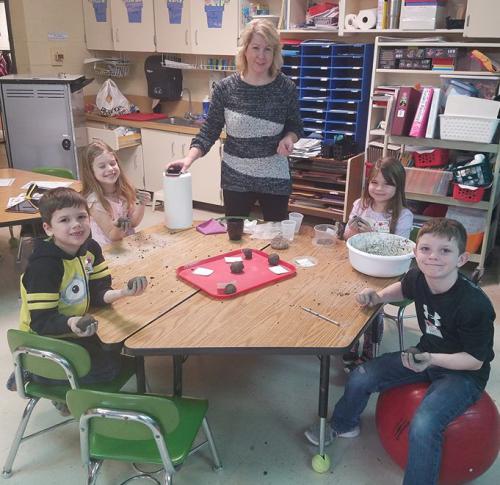Making seedballs with youth
Youth across Michigan are interested in increasing pollinator habitat. Learn how you can help by making seedballs.

What are seedballs? Why do some people use seedballs? The Michigan State University Extension science team’s goal is to help increase environmental science literacy across Michigan. One way we support an increased interest in our environment is to provide information and ideas for engaging youth in exploring their world. Adults can help youth increase their environmental science literacy by encouraging them to ask questions and discover answers. Exploring what seedballs do and why they are important is one way to engage youth in STEM (Science, Technology, Engineering and Mathematics).
Did you know that making seedballs is an ancient method of no-till agriculture? Some farmers believe that tilling the land can be destructive to the soil health as well as labor intensive. For others, tilling the land is not possible because of the terrain or its location. Regardless of why, more and more people choose to use seedballs as a way of giving seeds an advantage in gardens, meadows, field and naturalized areas.
Seedballs are a mixture of clay, soil and seeds. The clay holds moisture and the nutrients of the soil wrapped around the seed, which gives them an advantage.
To make seedballs with youth, select your seeds, location to be planted and determine the time of year for planting. For example, students at Alcona Community Schools selected milkweed seed, which we collected in a nearby field. Then we looked throughout the community to find areas not normally mowed with good sunlight; we decided to plant them at the edge of the playground and received permission from the school.
Materials needed are potting soil, clay (unscented, all clay cat litter), water, seeds and a bucket. Mix about 1 part soil to 4 parts clay then slowly add water and mix until balls formed will stay together. Poke a small hole into the center of the ball and add a pinch of seed. Reform the ball and set aside.
After all the seedballs are formed, take them outside and place in the desired location. We planted our milkweed balls in the fall because milkweed seeds need to be cold, moist and stratified (seed coat weakened so seeds can germinate), which happens naturally in Michigan winters.

Group of students with their teacher Gail Gombos making seedballs.
Explore other seeds and locations that would be good choices for seedballs. The youth chose milkweed seeds and the schoolyard because although there were some monarchs in the area, there was still a need for additional habitat. You can help youth explore plants for other types of butterflies to attract bees, other insects, hummingbirds or other birds.
MSU Extension and the Michigan 4-H Youth Development program help to create a community excited about STEM (Science, Technology, Engineering, and Mathematics). 4-H STEM programming seeks to increase science literacy, introducing youth to the experiential learning process that helps them to build problem-solving, critical-thinking and decision-making skills. Youth who participate in 4-H STEM are better equipped with critical life skills necessary for future success.
To learn more about the positive impact of Michigan 4-H youth in STEM literacy programs, read our 2016 Impact Report: “Building Science Literacy and Future STEM Professionals.”



 Print
Print Email
Email




